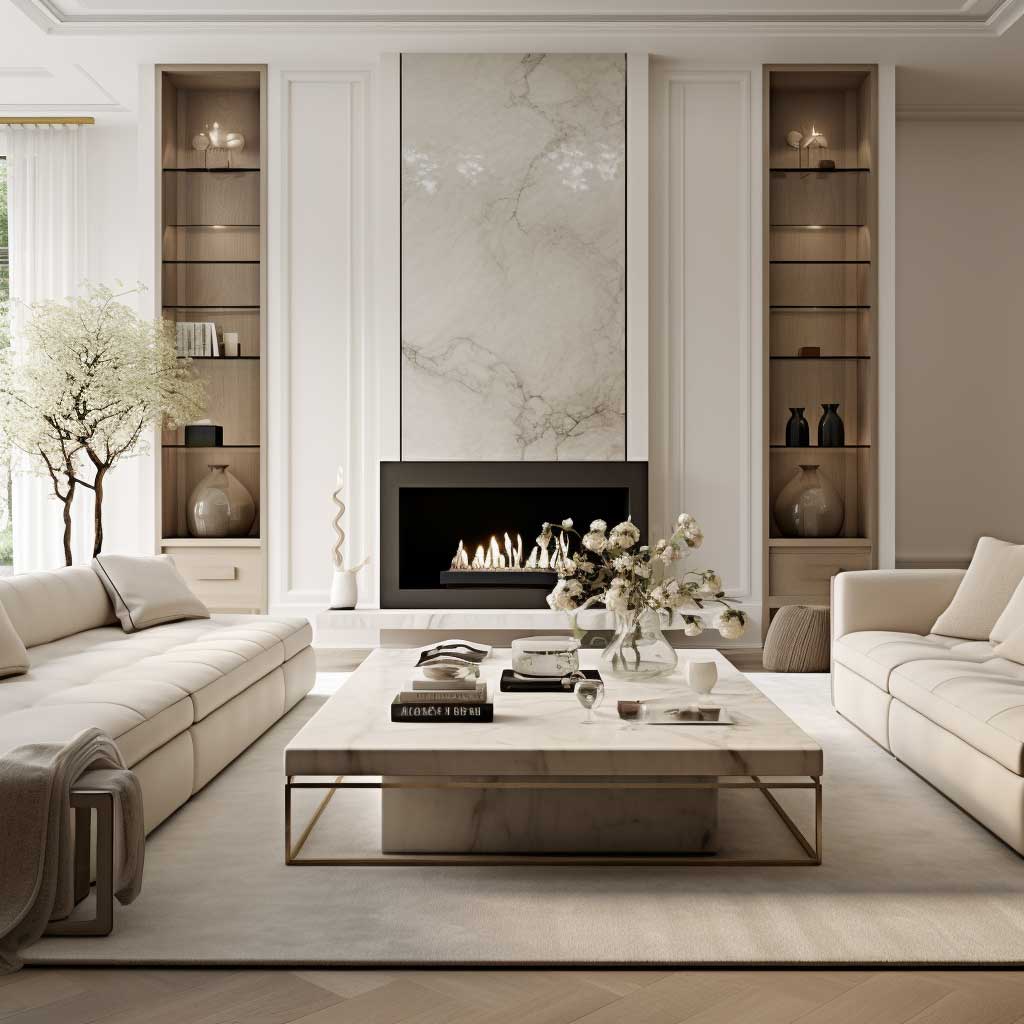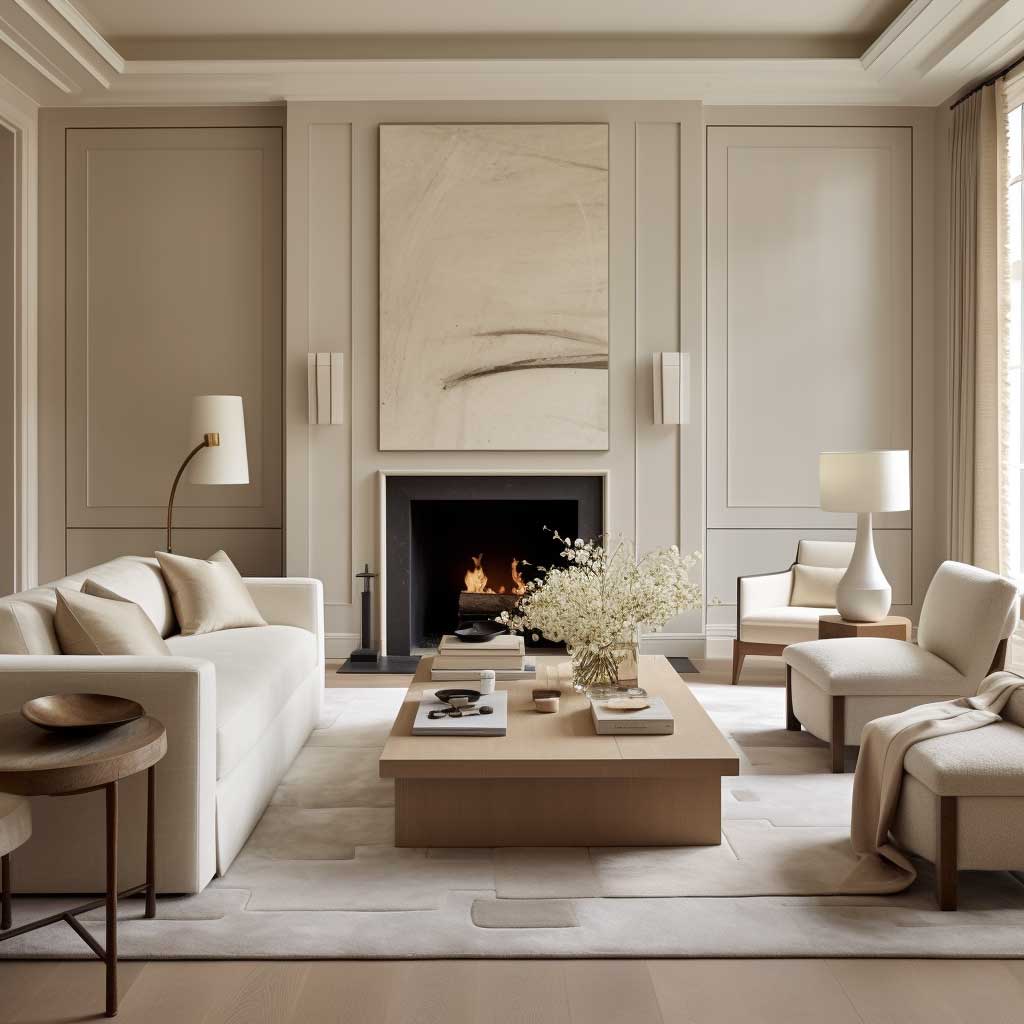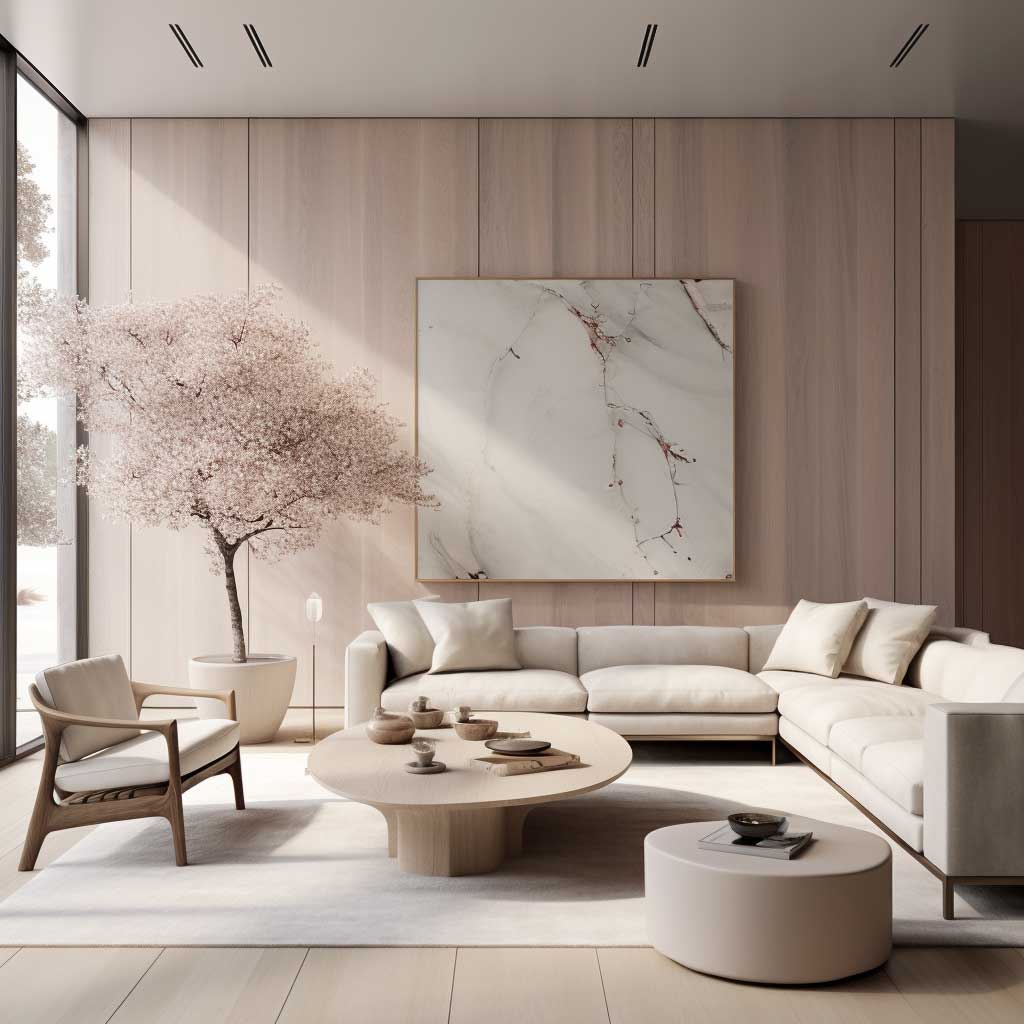Living rooms are where life unfolds in our homes — it’s where we relax, entertain, and spend quality time with our loved ones. However, refreshing this central space does not necessarily require a full-blown makeover. Sometimes, less is more, and a few well-thought-out changes can make a big difference. Let’s dive into five simple living room ideas that can effortlessly breathe new life into your space.
Embracing Neutrality




One of the most effective simple living room ideas is to embrace a neutral color scheme. It’s all about balance and harmony, combining different shades of white, beige, grey, and earth tones to create a soothing and visually pleasing environment.
Neutrals are incredibly versatile — they provide the perfect backdrop for any decor style, whether it’s modern, traditional, rustic, or boho. They also allow your furniture, artwork, and accessories to shine, letting the eye travel effortlessly throughout the space.
One of the primary advantages of a neutral living room is its timeless appeal. Trends come and go, but neutrals have a staying power that’s hard to match. Moreover, they reflect light beautifully, making your living room feel more spacious and airy.
Incorporating different textures and materials can prevent a neutral living room from looking flat or boring. Combine soft fabrics, like velvet or linen, with harder materials, like wood or metal, for a multi-dimensional look. Adding an indoor plant or two can bring in a touch of nature, contributing to the tranquil atmosphere.
A neutral living room is like a blank canvas. It allows you to experiment with different color palettes and decor items without overwhelming the space. It’s about creating a living room that’s not only visually appealing but also comfortable and welcoming, a space that you’ll love coming back to at the end of the day.
Minimalist Magic




Minimalism has steadily grown in popularity over the years, and for a good reason. This design approach values functionality and simplicity, enabling you to declutter not just your living room, but also your life. Implementing minimalist principles is an excellent way to refresh your living room, stripping it down to the basics and emphasizing purpose and intentionality.
A minimalist living room is not about creating a cold or sterile environment. Instead, it’s about carefully selecting pieces that bring joy and serve a purpose. The focus is on quality over quantity, with each furniture piece, decor item, and artwork intentionally chosen and placed.
One effective way to achieve minimalism in your living room is by following the ‘less is more’ rule. Remove items that don’t serve a functional or aesthetic purpose. This process can make the room feel more spacious and enable you to appreciate the items you’ve chosen to keep.
Color plays a significant role in minimalist design. Similar to neutral-themed spaces, minimalist living rooms often stick to a simple color palette with muted and monochromatic shades, creating a calming and cohesive look.
Minimalist living rooms also tend to favor clean lines and geometric shapes, creating a sense of order and simplicity. However, don’t shy away from adding a few curves or organic shapes to soften the look.
The appeal of a minimalist living room lies in its simplicity and understated elegance. It’s a living room that invites you to breathe, relax, and find peace in a world that can often feel chaotic and overwhelming.
The Art of Layering



Mastering the art of layering is one of the most transformative simple living room ideas. It’s about creating depth and interest by blending different elements like patterns, textures, and colors. Layering can make your living room feel warm, cozy, and visually stimulating, enticing you and your guests to sit down and stay awhile.
To start layering, begin with a base color for your living room. This color should be a neutral tone that will act as a canvas for your layering experiments. Then, add in more colors, either through larger furniture pieces or smaller accents like cushions, throws, rugs, or artwork.
Texture is another crucial element in layering. Combining different materials and finishes can create a rich, tactile experience. Think plush velvet cushions, a chunky knit throw, a sleek leather sofa, a rustic wooden coffee table, or a soft shaggy rug. These diverse textures can interact with each other and the light in your room, adding depth and dimension.
Don’t be afraid to play with patterns in your living room. Patterns can bring a dynamic vibe to your space, making it more lively and interesting. However, to prevent the space from looking chaotic, try to stick to a consistent color palette and balance bold patterns with solid blocks of color.
Remember, layering is an art, not a science. It’s about trial and error, intuition, and personal taste. Don’t rush the process. Take your time to find pieces that you love and experiment with different combinations. Eventually, you’ll create a layered living room that reflects your unique style and personality, a space that feels just right.
Conclusion
Revamping your living room doesn’t always mean embarking on a significant remodeling project. Sometimes, all it takes is a few simple living room ideas to transform your space. Whether you choose to embrace a neutral color scheme, adopt minimalism, or master the art of layering, remember to let your personal style shine through. After all, the most important thing is that your living room feels like home.












